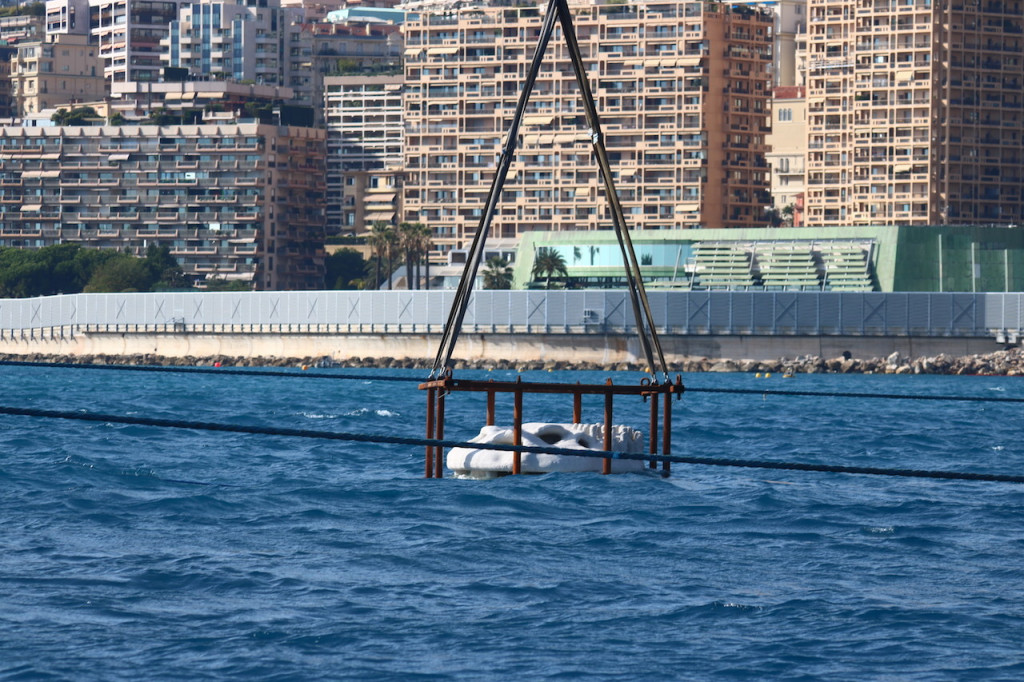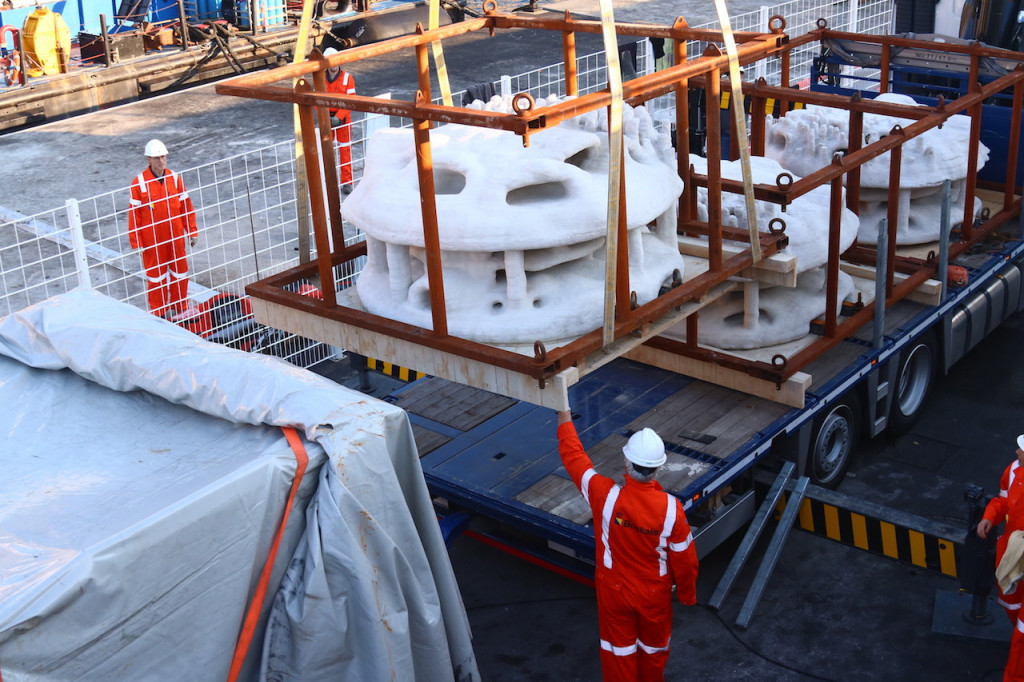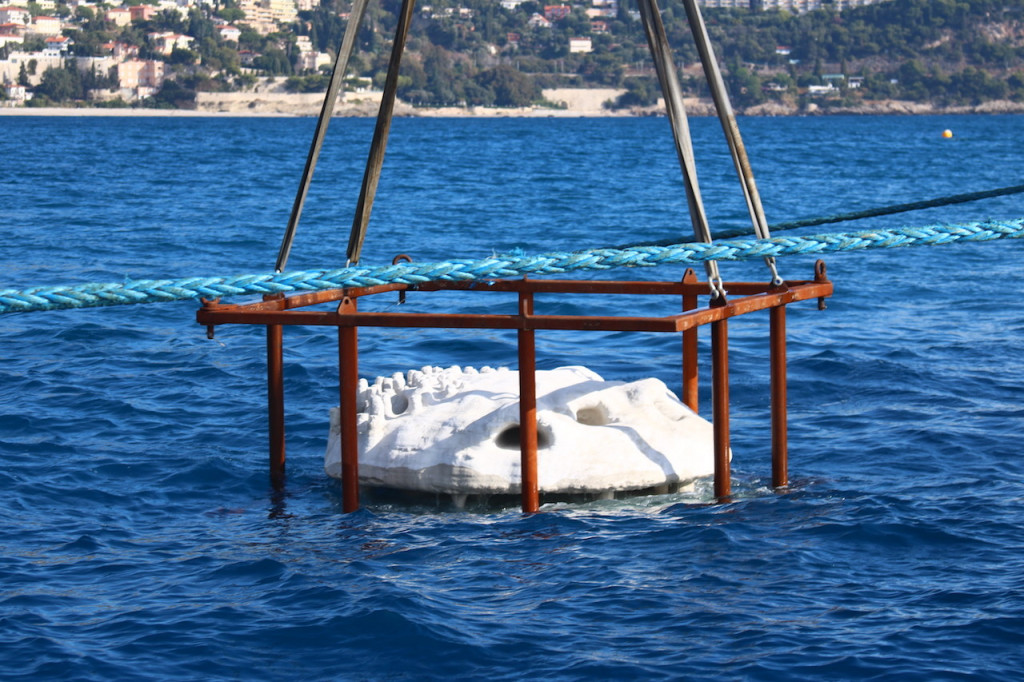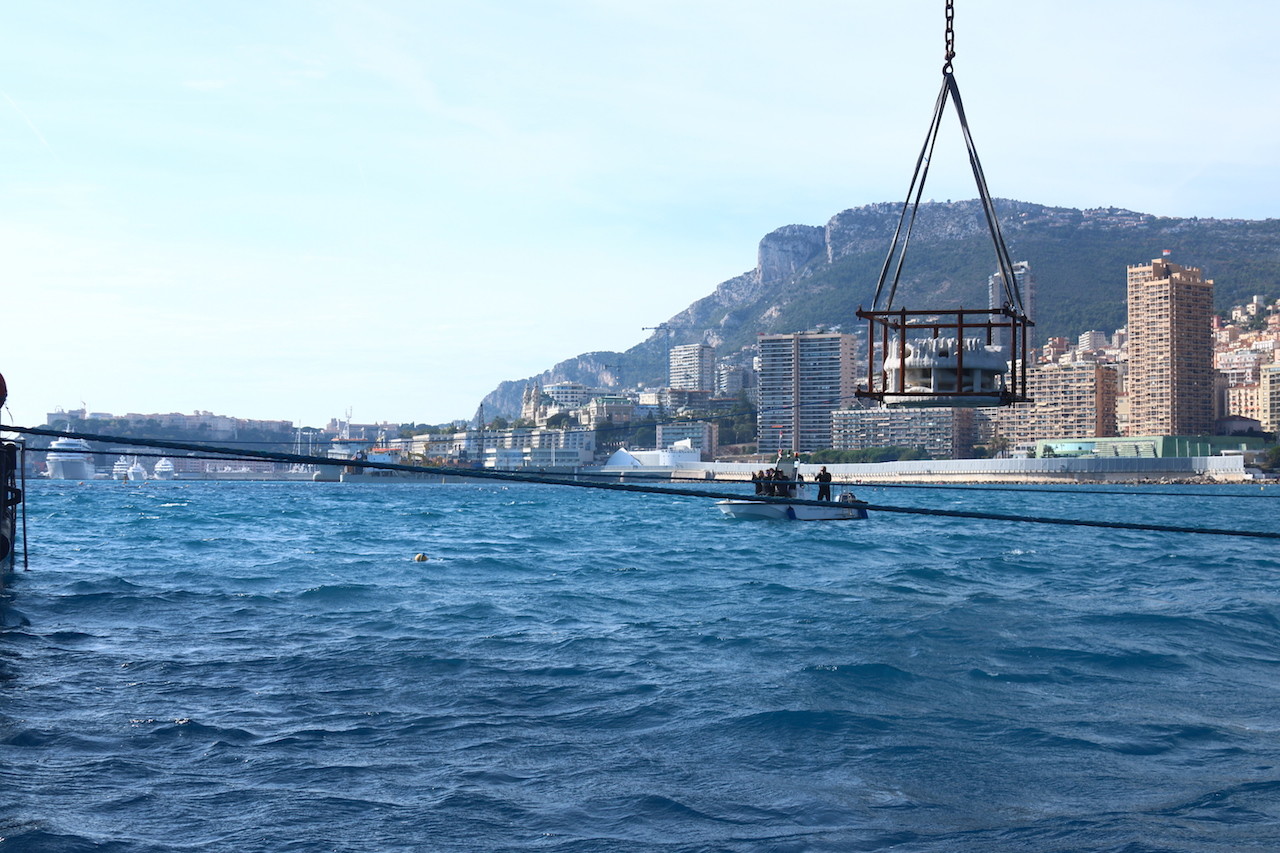
Six 3D-printed reefs, made from natural products, dolomite sand and volcanic ash, and weighing 2,500 kg each, were submerged in the Larvotto marine protected area in Monaco on the last day of October. This is a first in the Mediterranean and in the world in terms of the size of the printed reefs.
This innovative project is led by the Boskalis Company and the ECOMERS laboratory – Nice University and CNRS, France’s National Centre for Scientific Research – with support from the Prince Albert II of Monaco Foundation and in partnership with the Monegasque Association for Nature Protection (AMPN), which manages Monaco’s marine protected areas.

By printing artificial reefs with a 3D printer, it’s possible to mimic the complexity of the natural environment and therefore encourage the restoration of ecosystems by creating suitable habitats for fish and macro-invertebrates.
Major studies have been conducted by Boskalis in order to formulate a material that meets a number of requirements: water resistance, strength, compatibility with 3D printing technology and above all, zero adverse impact on the marine environment.
In parallel, research programmes have been set up by Professor Patrice Francour of ECOMERS to select the substrates most favourable for future colonisation by flora and fauna, and to develop a method for measuring exactly the structural complexity of the artificial reefs.

Long-term monitoring of the submerged reefs in the Larvotto marine protected area will be put in place very soon by ECOMERS and AMPN. This will make it possible to track the progressive natural colonisation of the reefs, monitoring animal, fish and invertebrate species by counts carried out by underwater diving and photography.
At the heart of the Larvotto marine protected area, which is in effect a natural laboratory for scientists, this programme will also further the development of innovative monitoring methods.
The experience gained can then be made available for use by managers of marine protected areas who wish to optimise the restoration of seabeds damaged by man’s activities.
